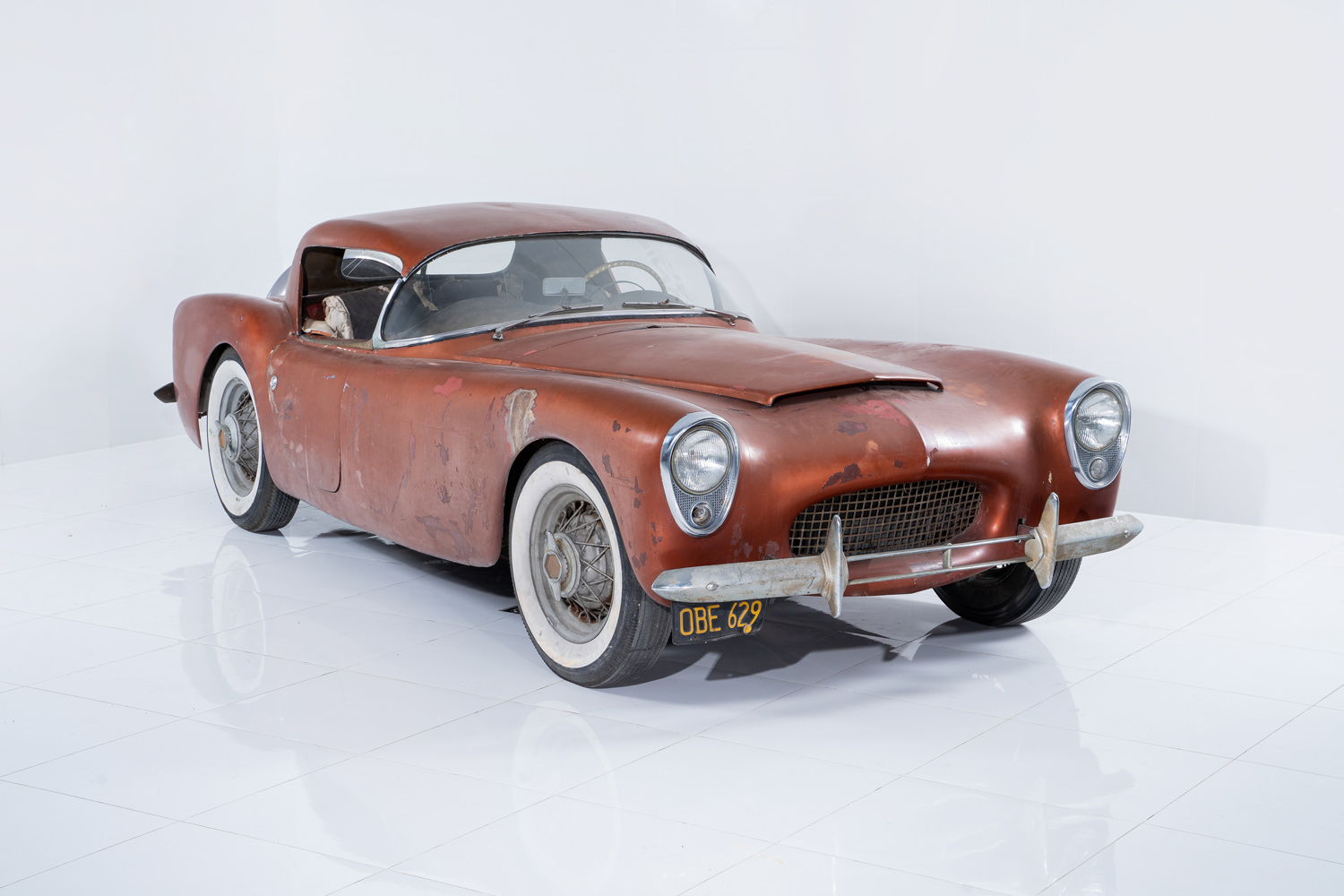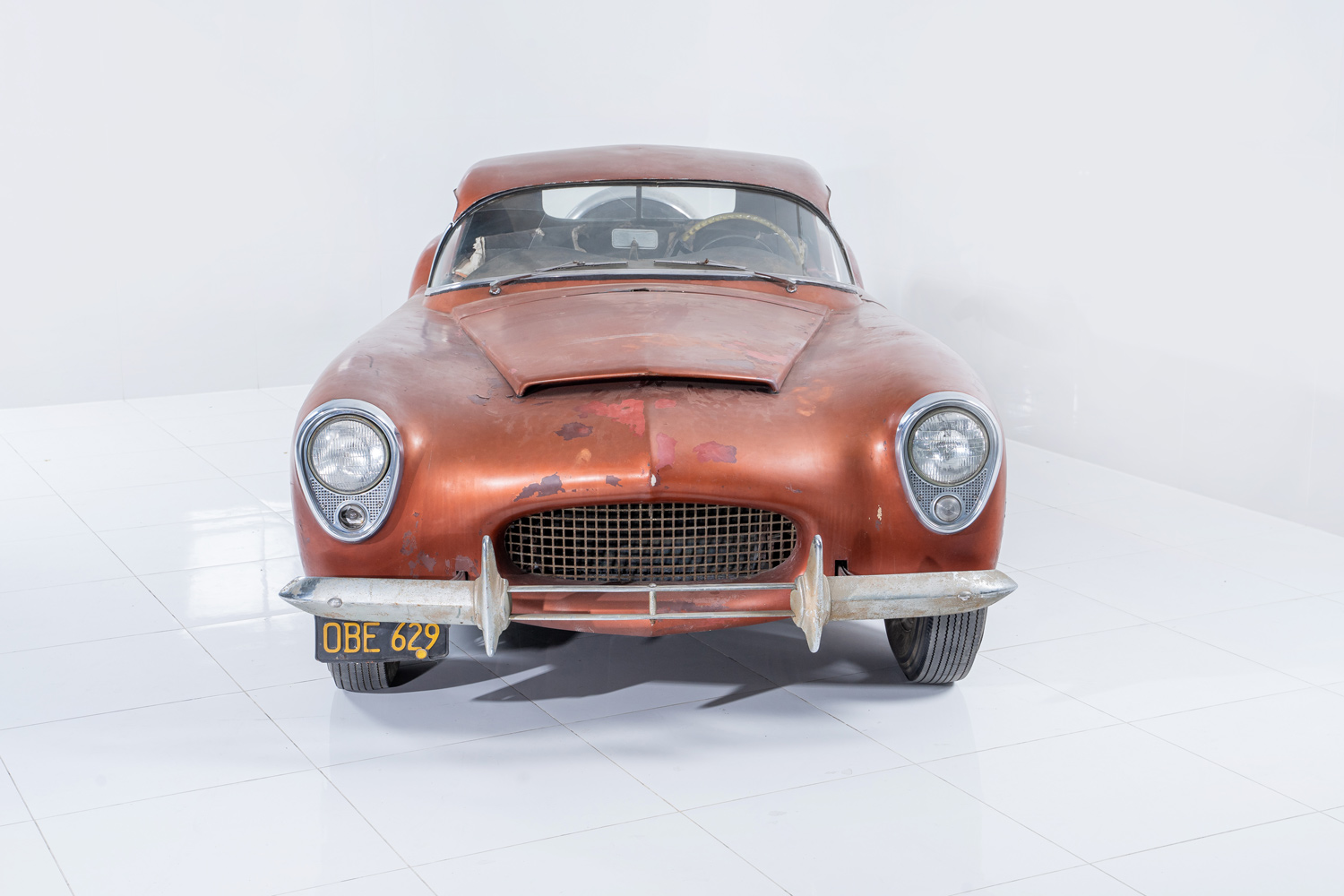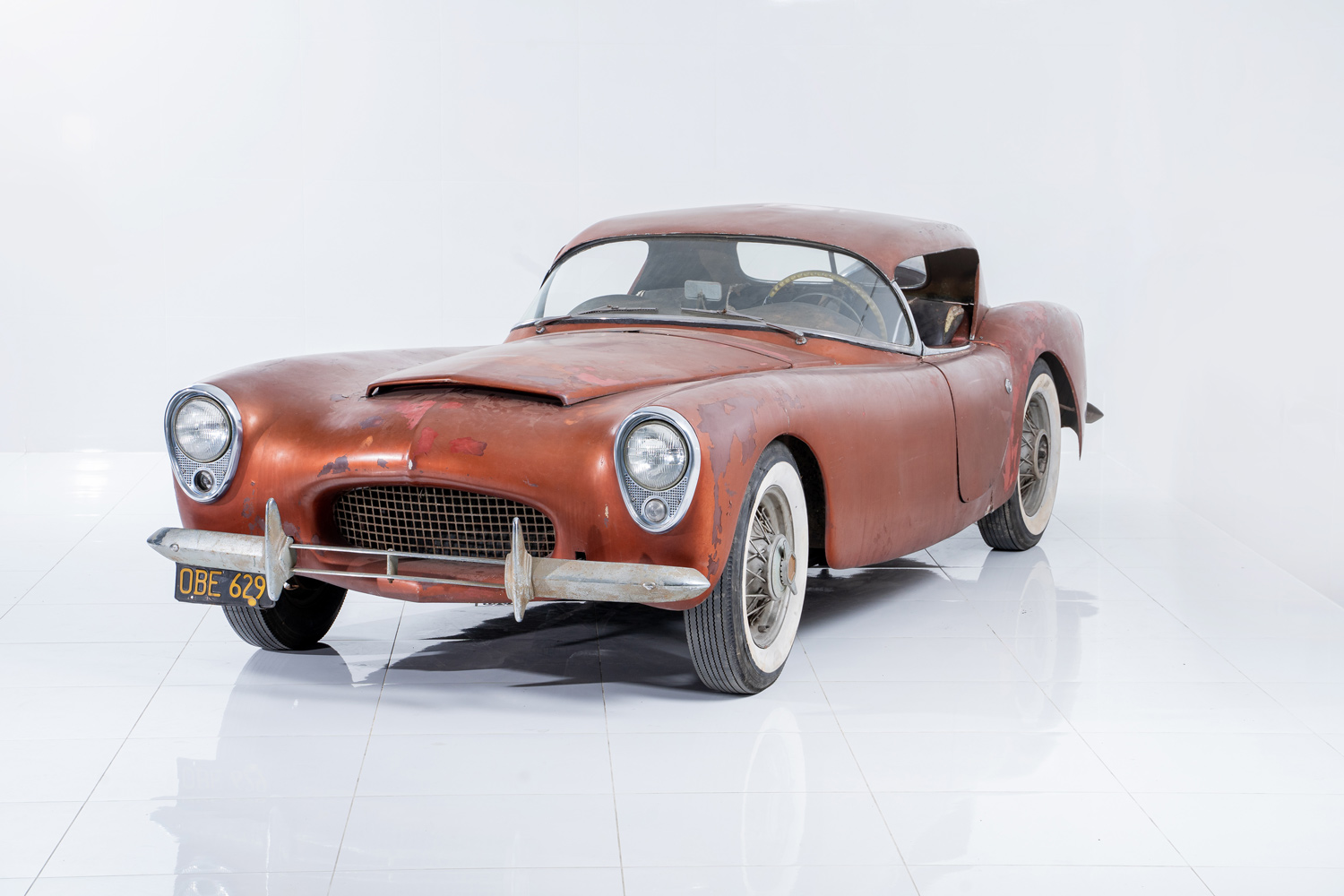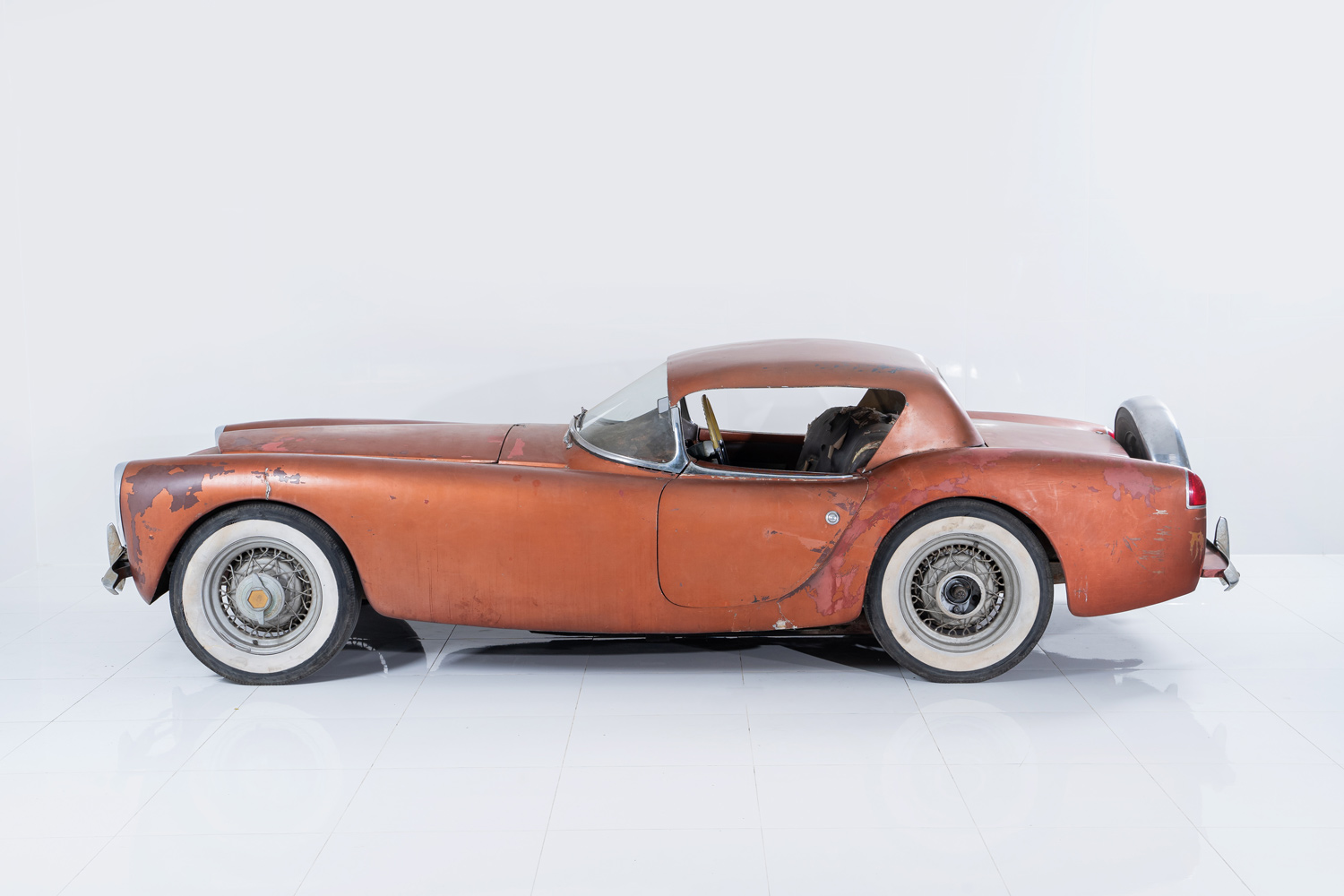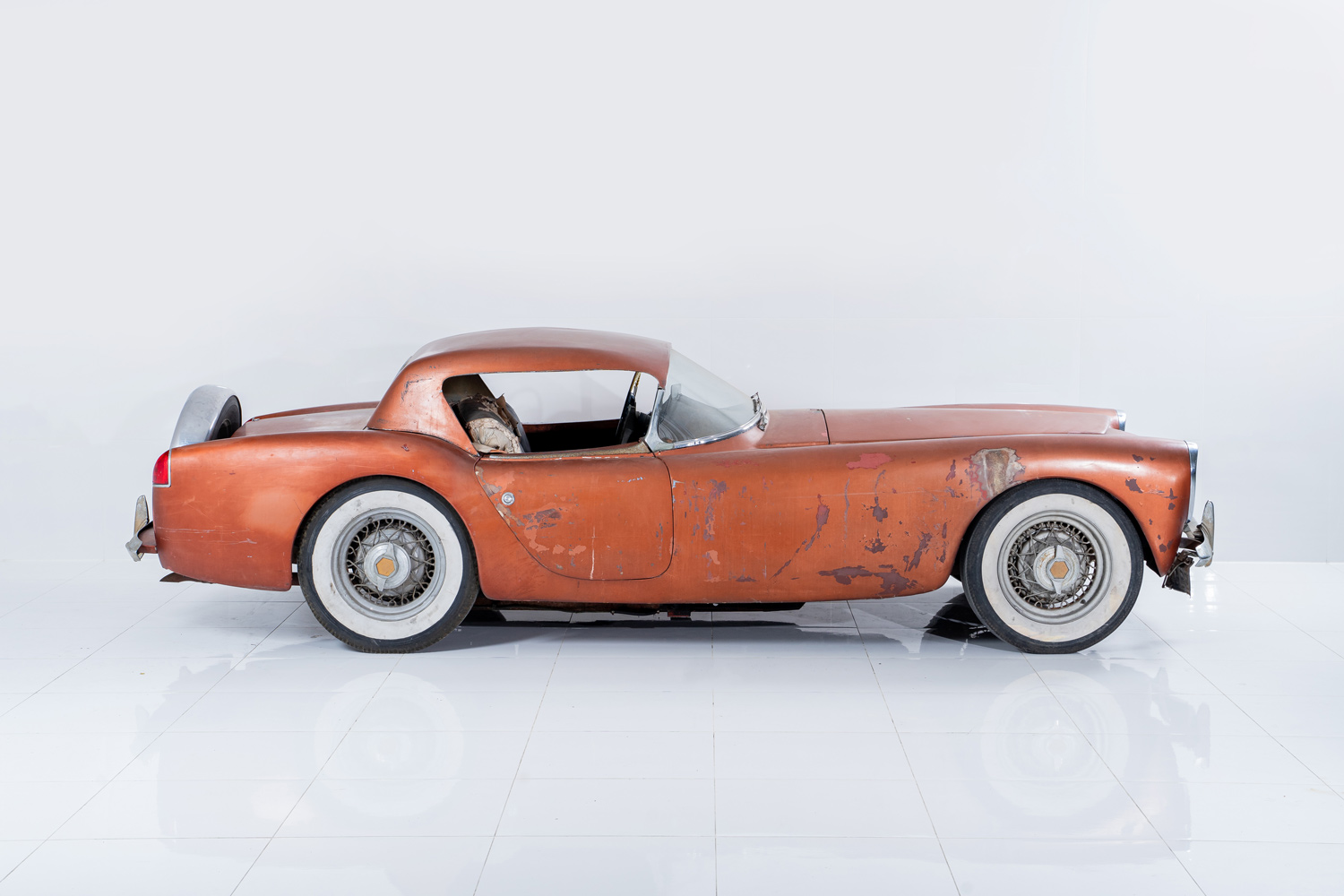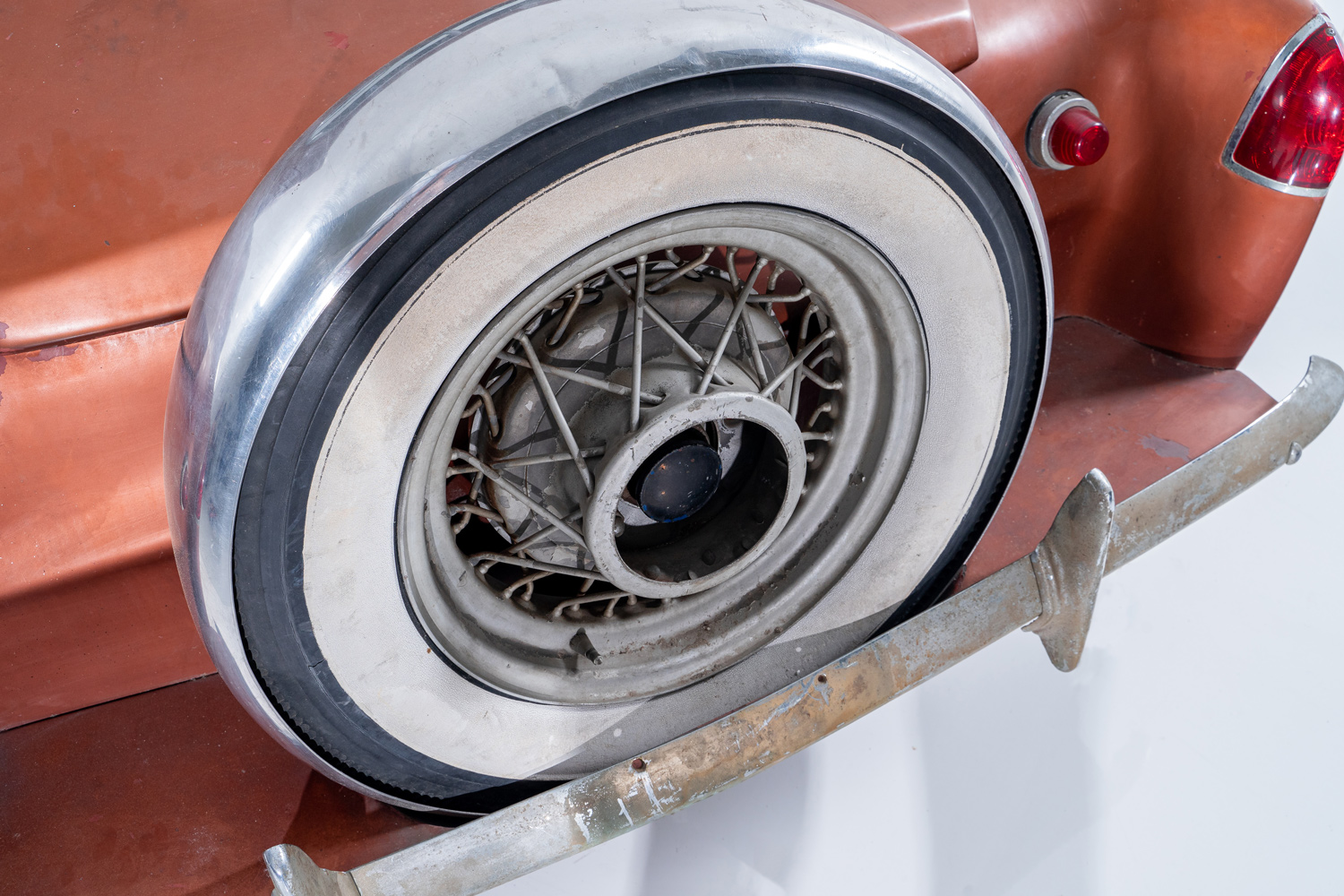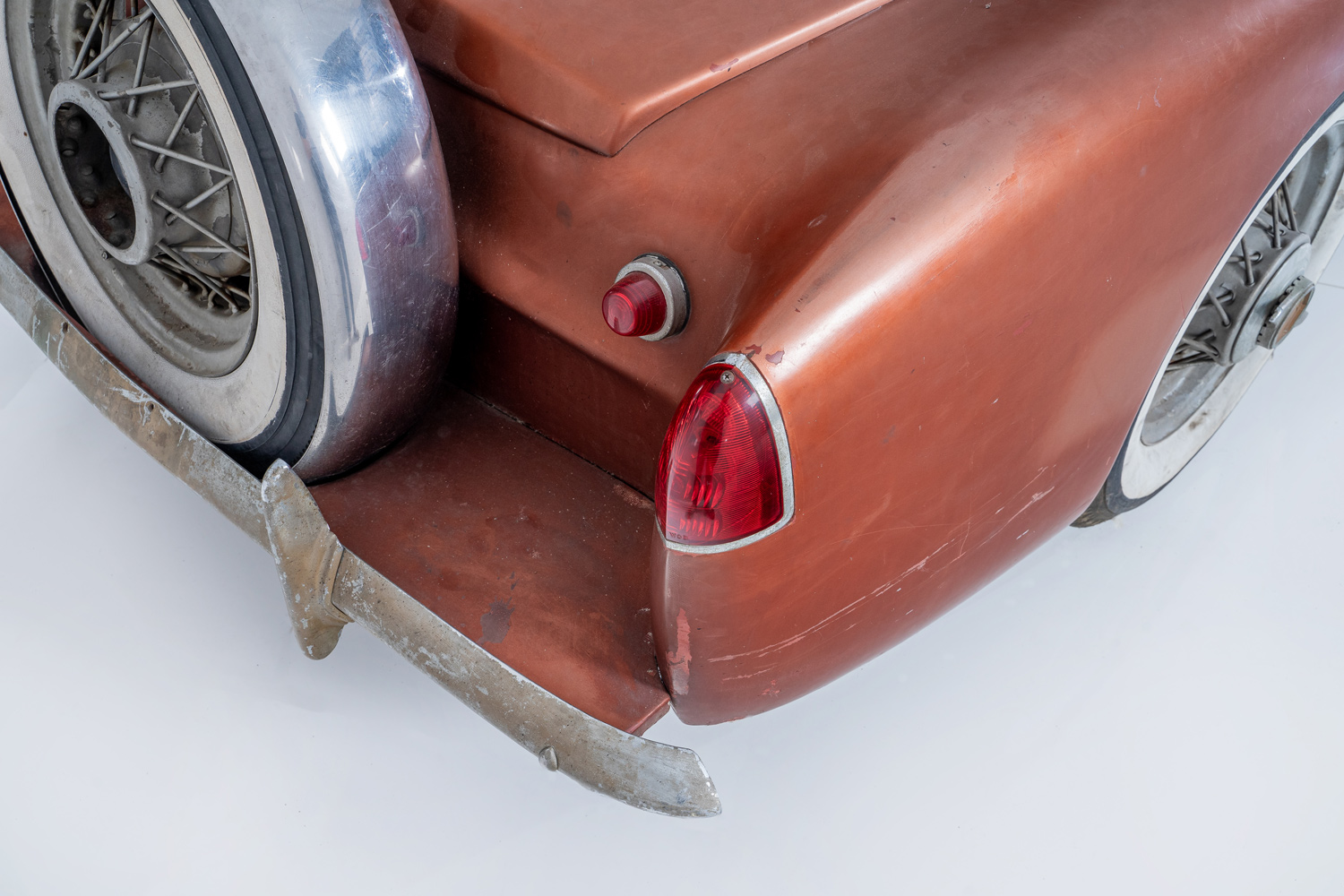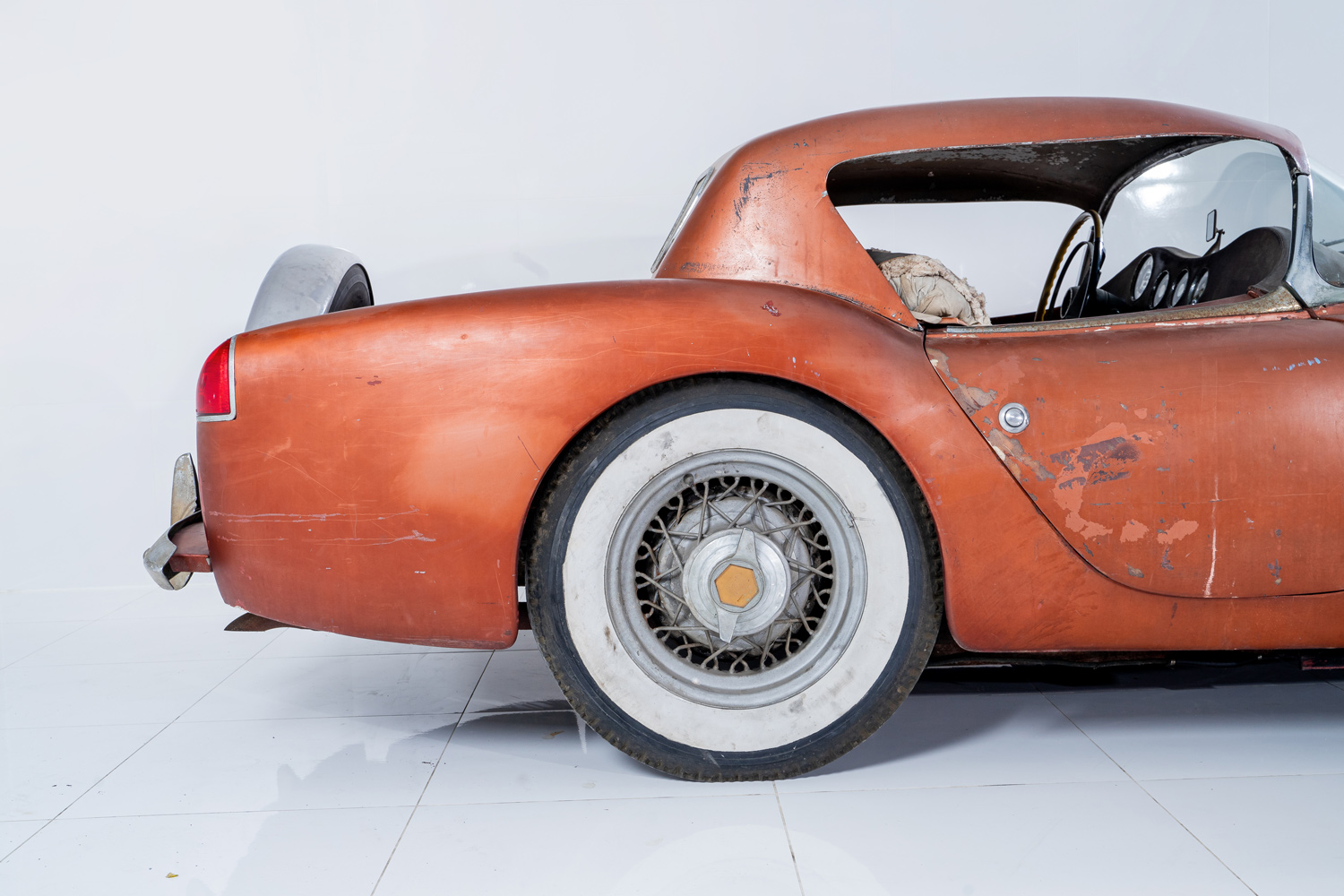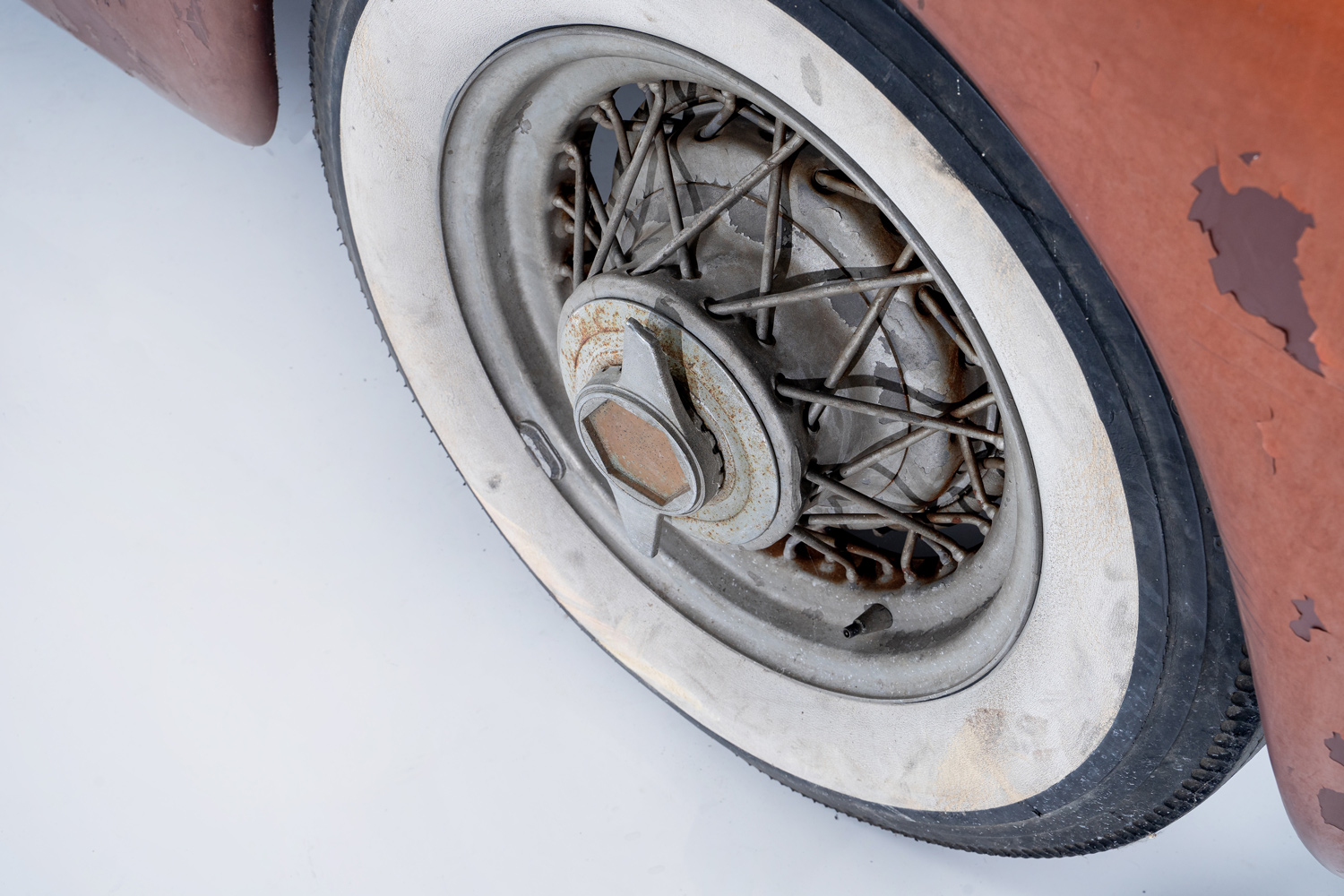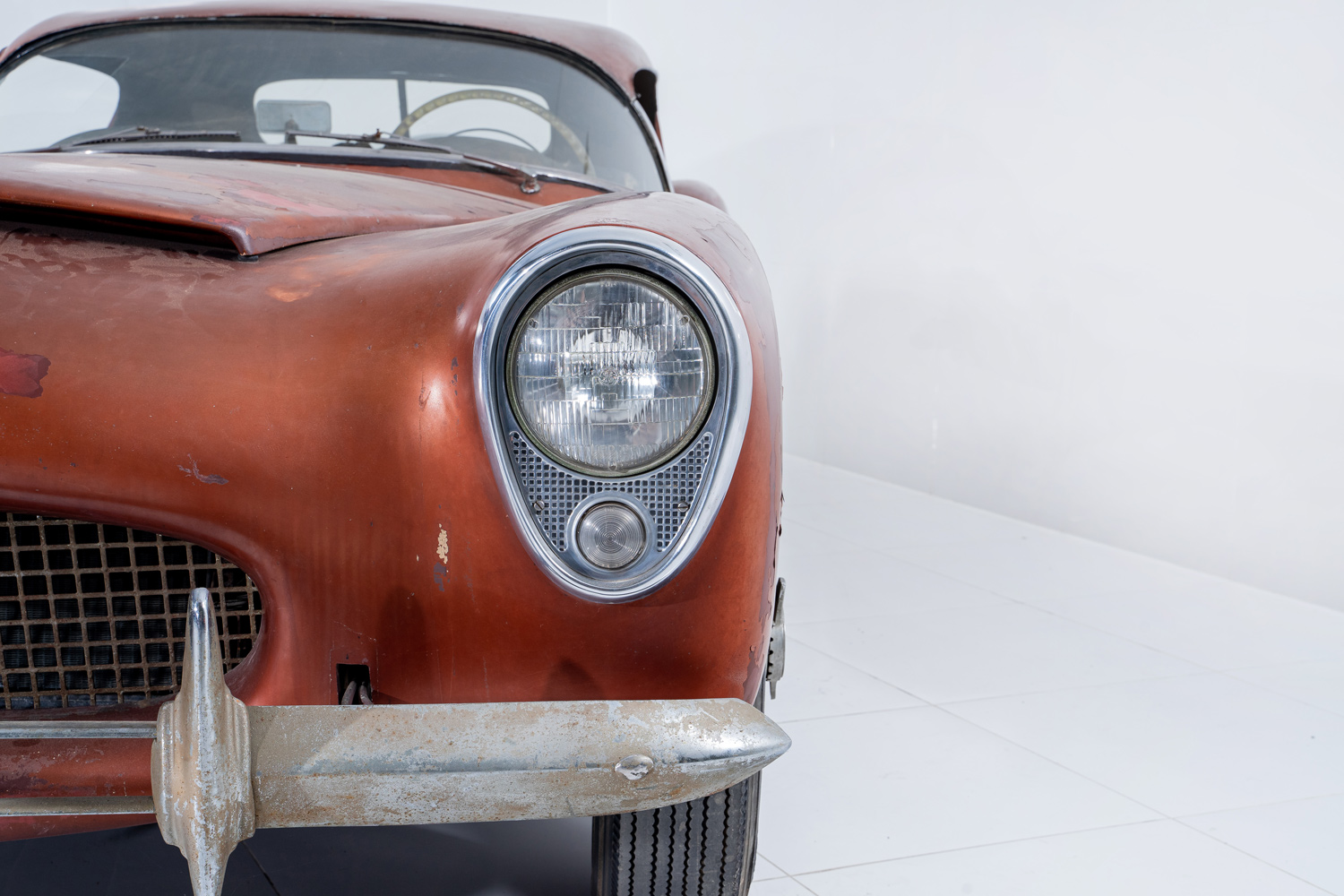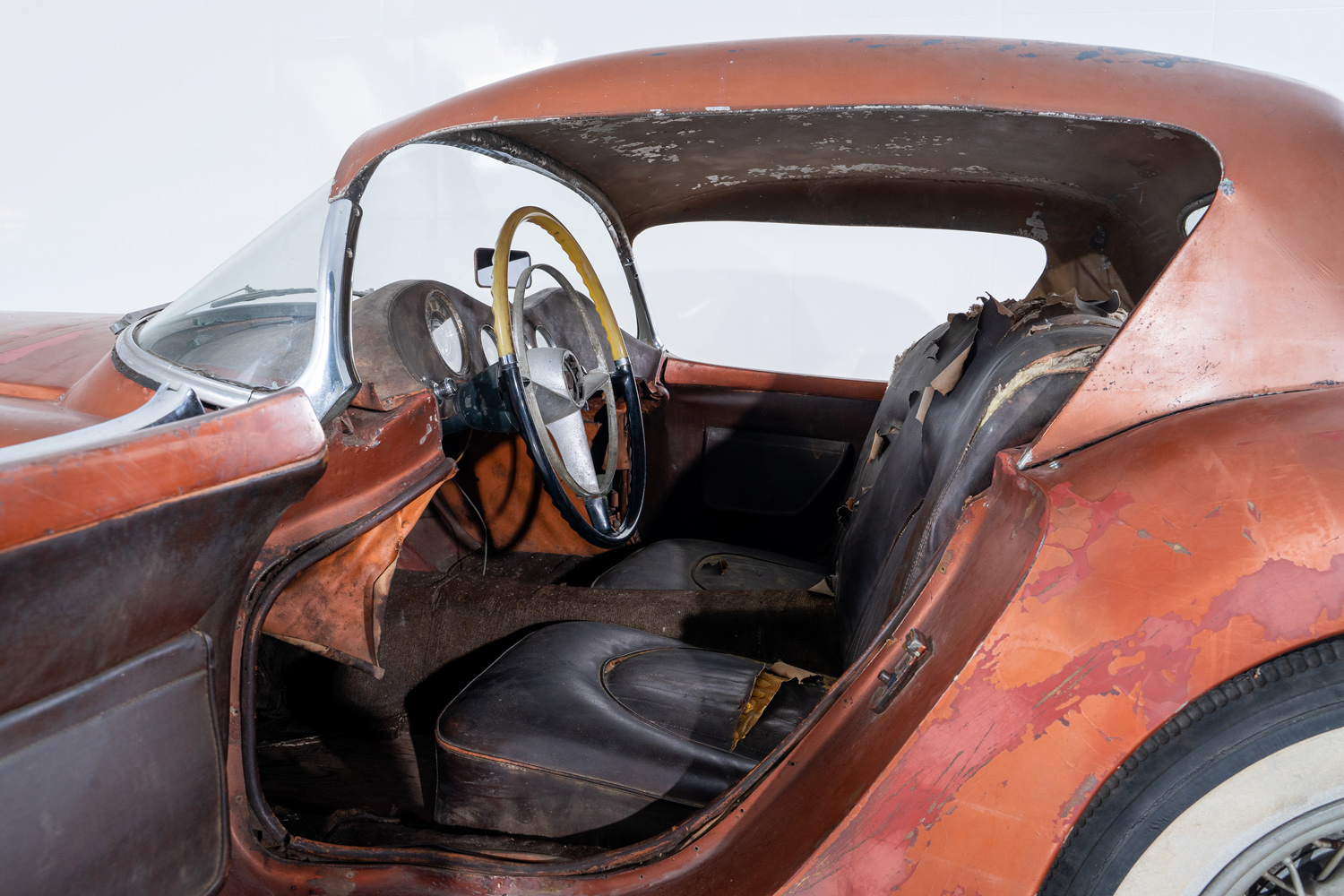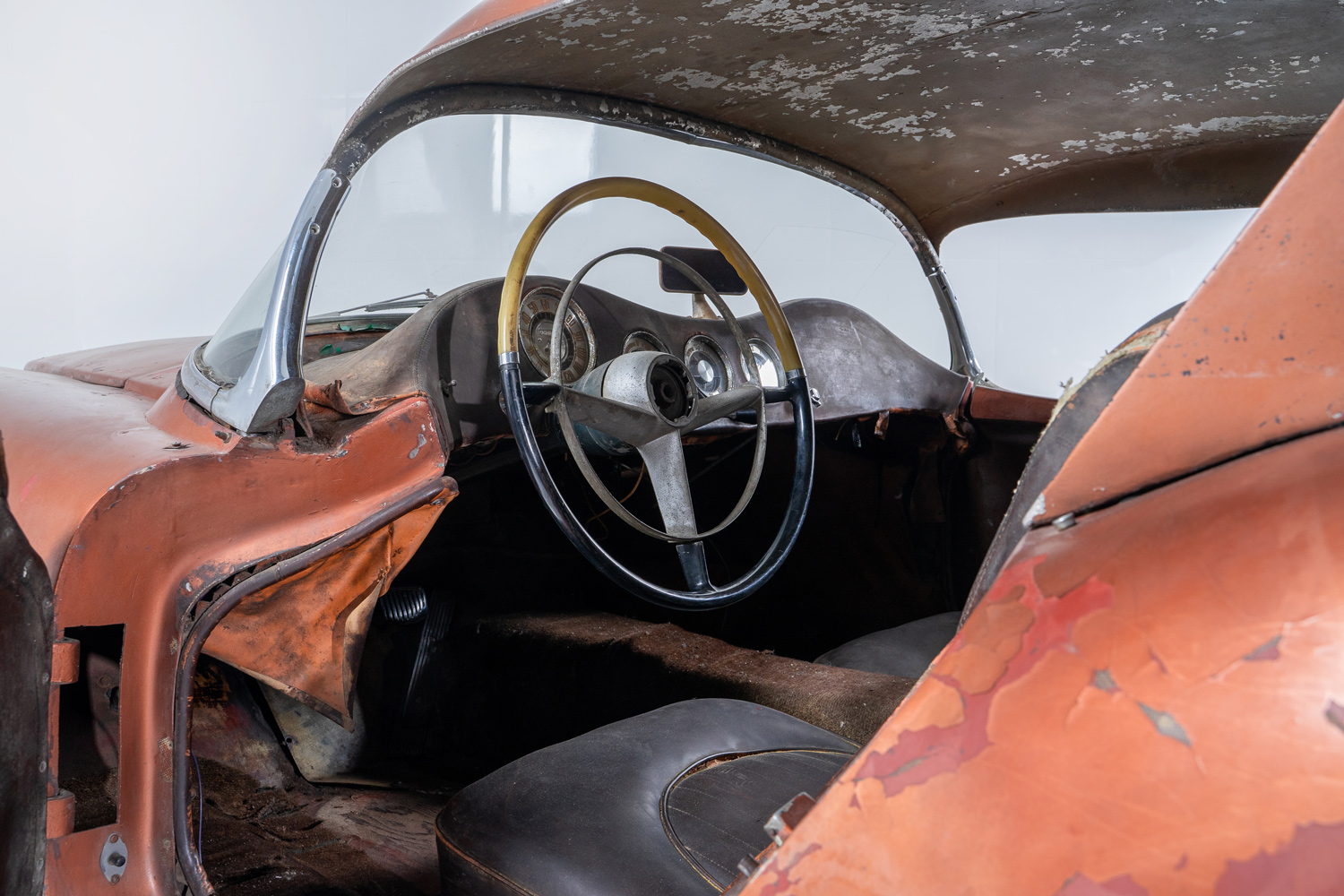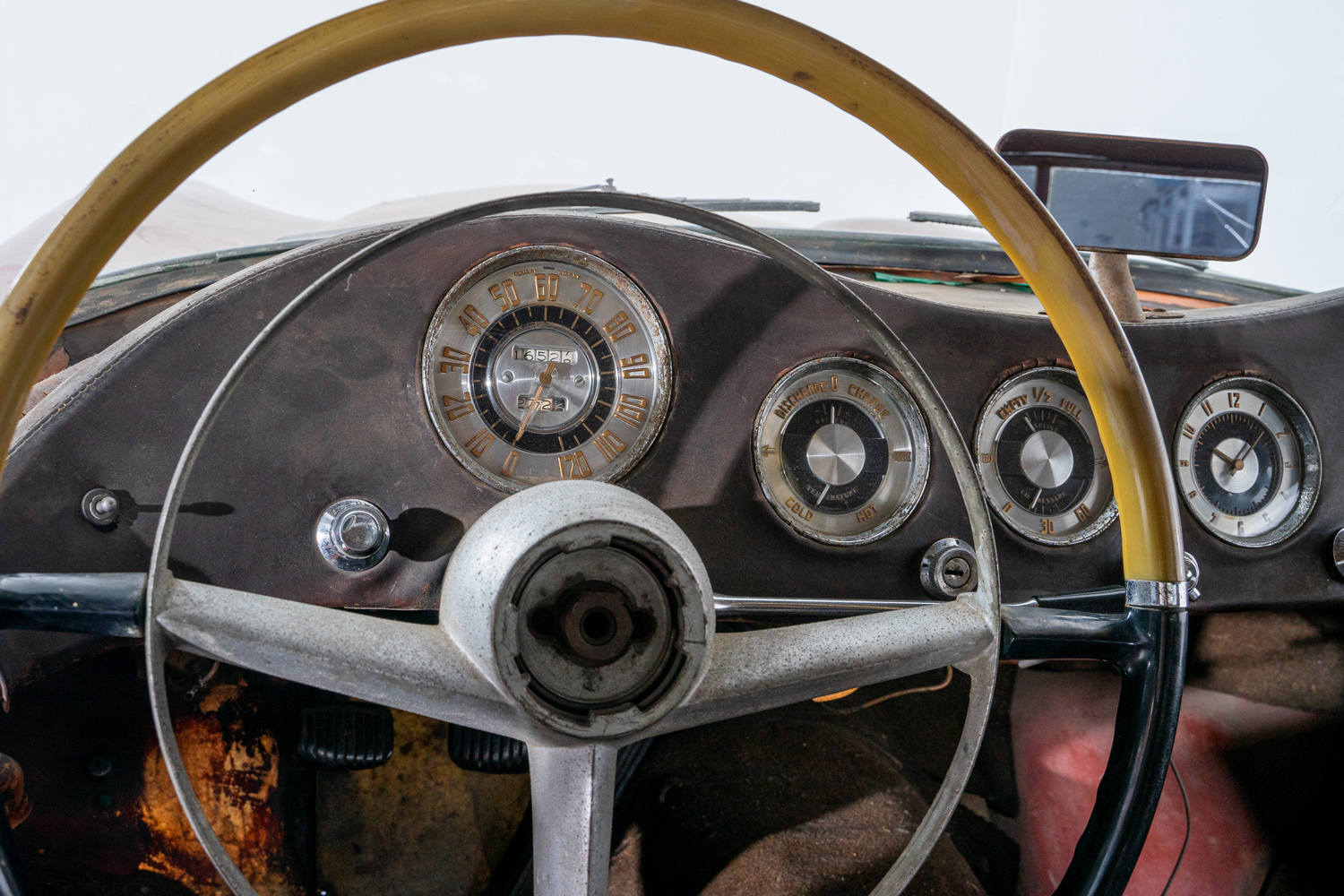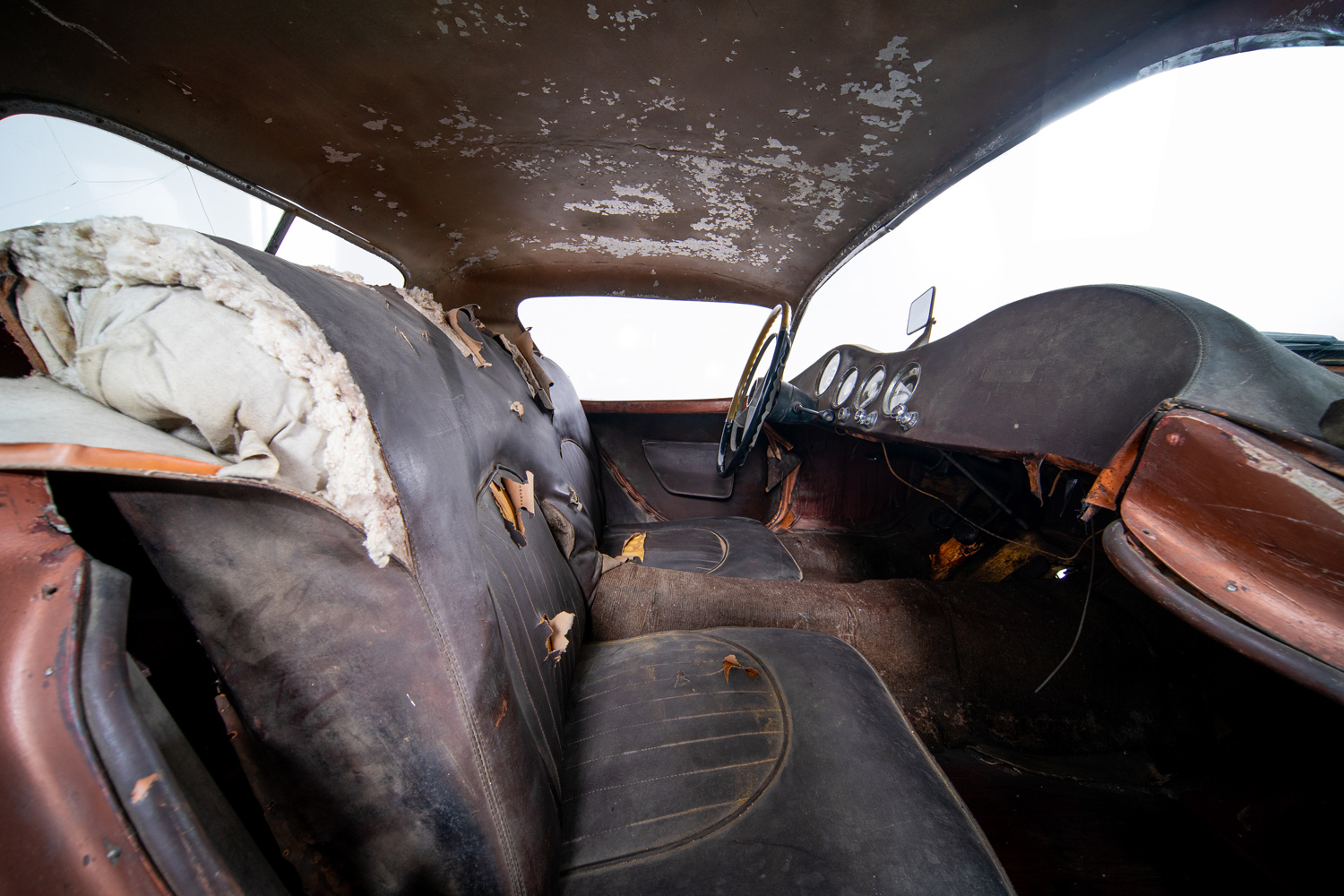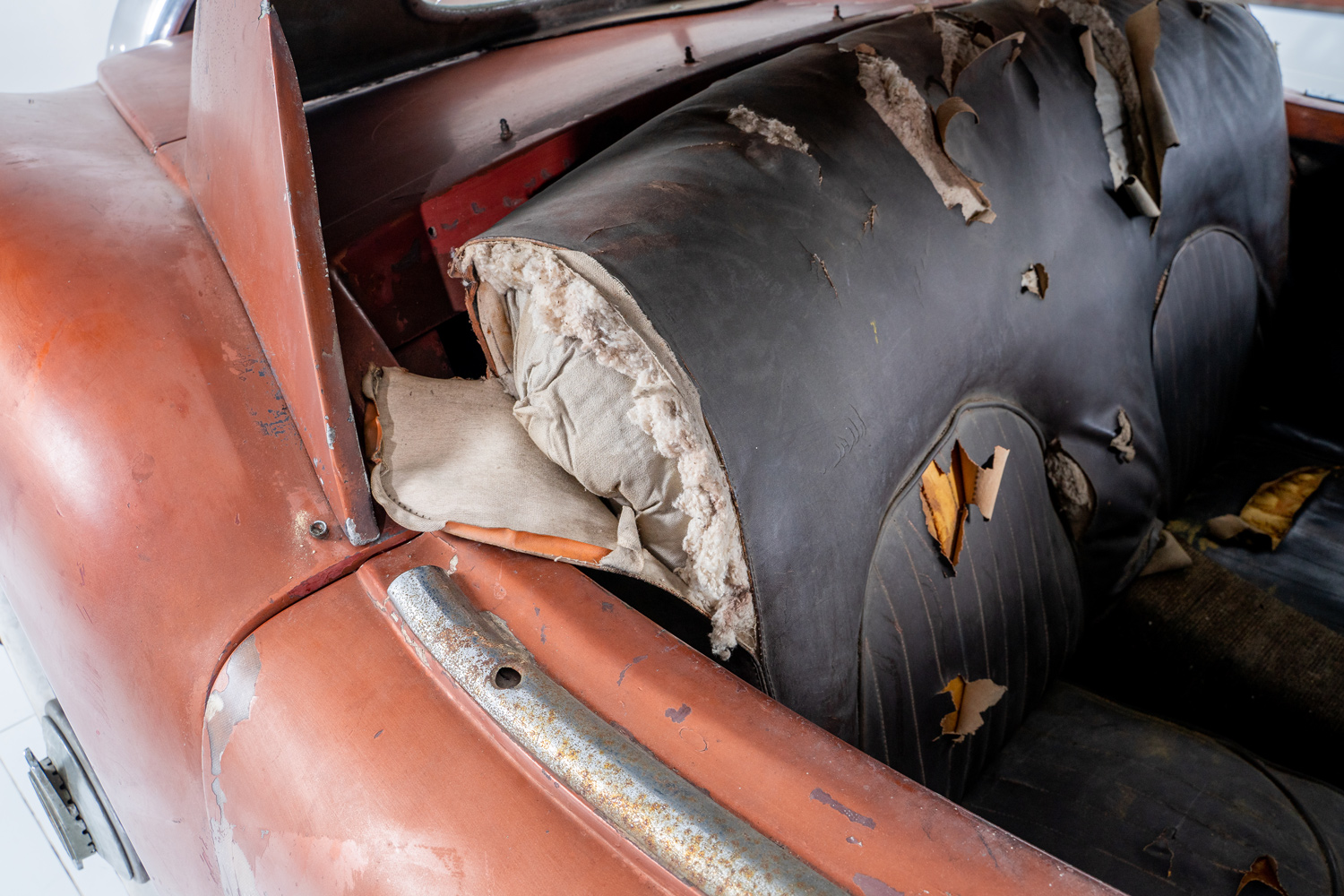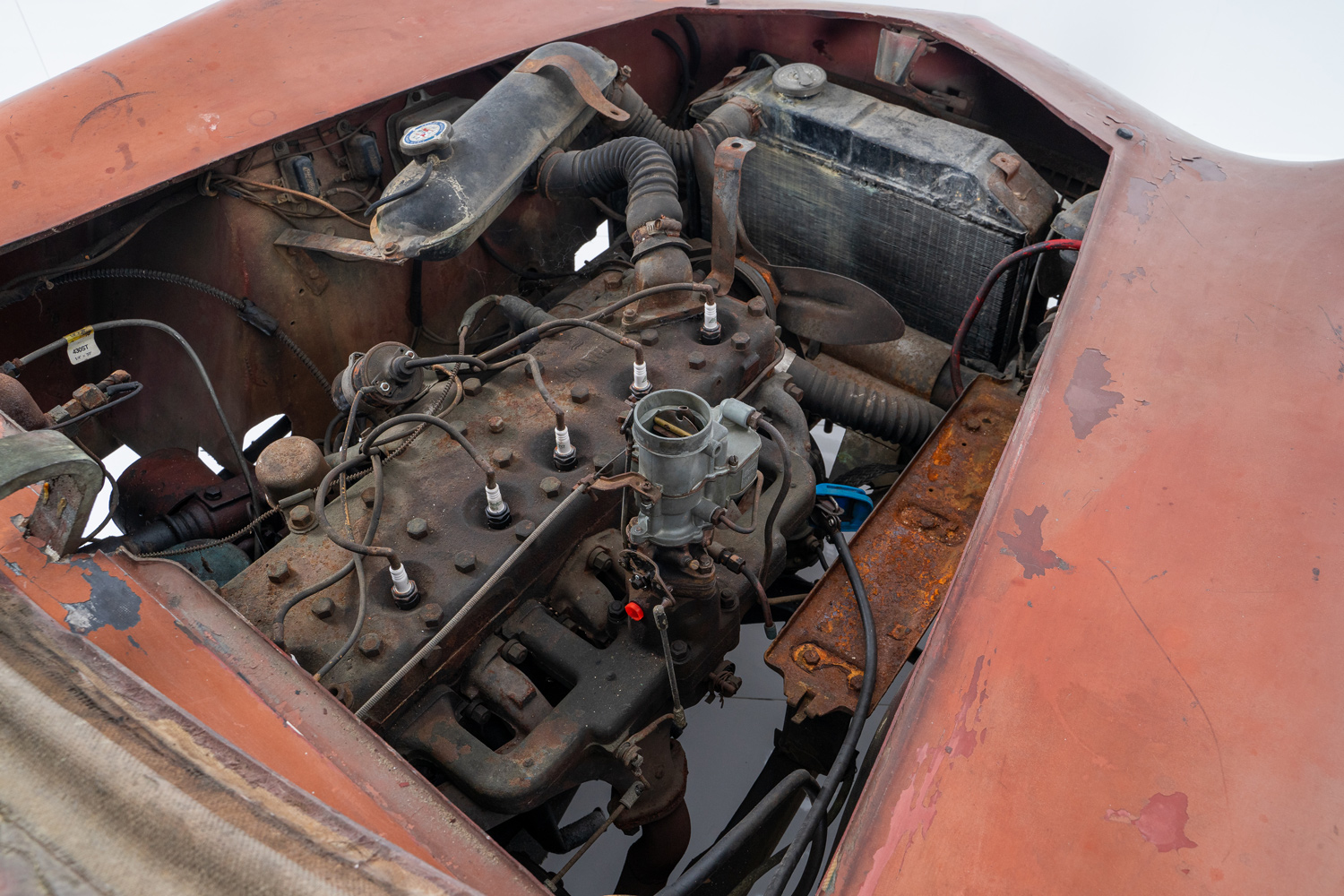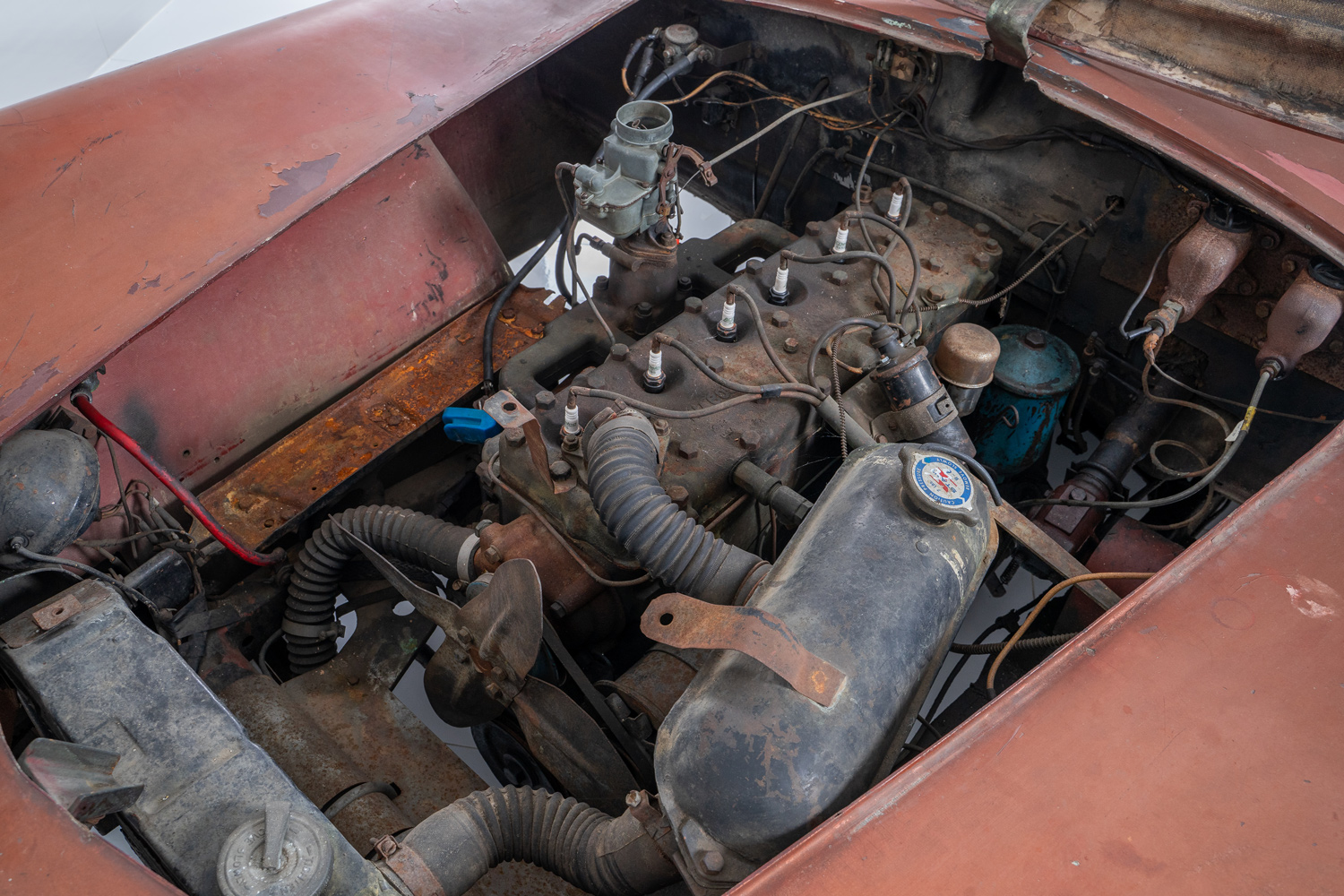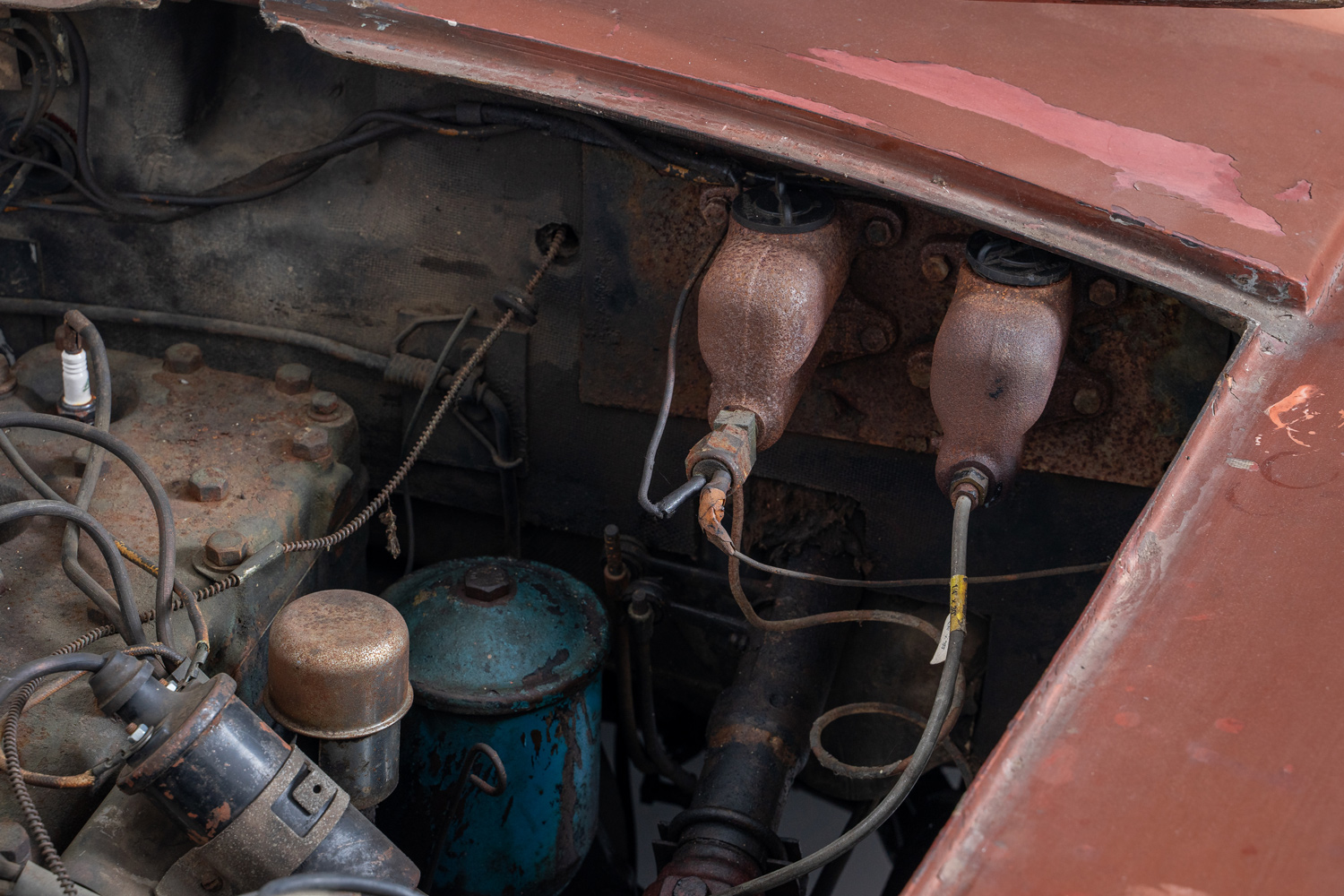MODEL HISTORY
Post-war America, although the fighting did not take place on its territory, showed insufficient capacity to produce new civilian vehicles after 1945. At the same time, there were a number of older cars and a desire to create new ones. Thanks to the gradual expansion of the use of fiberglass, it was relatively easy to create new and pleasing body shapes based on parts of existing production without the need for expensive investments. Although the Chevrolet Corvette is considered a pioneer in laminate-body vehicles, the truth is that Ford already experimented with this material before World War II and gave rise to several prototypes. The great hunger for an "affordable European sports car" caused a boom in the world of production of small-series cars with a laminate body and with conventional technology. One of the first and most important players was the American company Woodill.
Woody Woodill, an American businessman, the son of a car dealership owner in Downey (LA), who paid off his father's business at a relatively young age to become the youngest Dodge dealer in California, wanted to buy a sporty Jaguar XK120 through Dodge and Willis. Eventually, his service manager told him out of it, and, in 1952, Woodill decided to make his own sports car. Thanks to the representation and proximity to the production of Willis cars, components from these cars were finally chosen. The front axle originated from the Willis Jeepster, the rear from the Willis Aero. The engine is also from Willis. Even the body of the first series was not an original work, however, both the frame and the fiberglass came from another laminate car of the time - the Glasspar G2. This body was changed only for the second series of Woodill Wildfire, which did not take long to come. It received a new raised hood with an air intake opening, a different windshield, taillights from Willis Aero and bumpers from the Willis Jeepster.
The original plan was to build only two cars - one for sale, the other for himself. Eventually, seven factory-built Wildfires were created, and, in 1952, the car was even presented by Willis itself to its dealers at a meeting in Toledo and caused great interest from dealers to participate in the project. There was even an article in Time magazine that the car would be offered through the Willis dealer network. However, this project eventually fell through because Willis was bought by another company, which was already interested in a similar project elsewhere. Nevertheless, seven cars were allegedly offered through the Willis dealer network. Six of them were equipped with Willis components, one with components from Buick.
However, the company's interest in cheap sports cars continued, so Woody Woodill began to offer his cars in the form of a kit. This completely hit the nail on the head, and thanks to the declaration of only 14 hours needed to build the car and extending the "compatibility" of the kit to Ford components, there are records of the production of up to 300 kits of these cars. The production of kits was terminated in 1956, when Woodill refocused on the production of products outside the automotive industry.
OUR CAR
Our car is one of the 7 factory-built cars of the second series. It is complete and in pre-renovation condition. It was added to our collection in February 2014.

